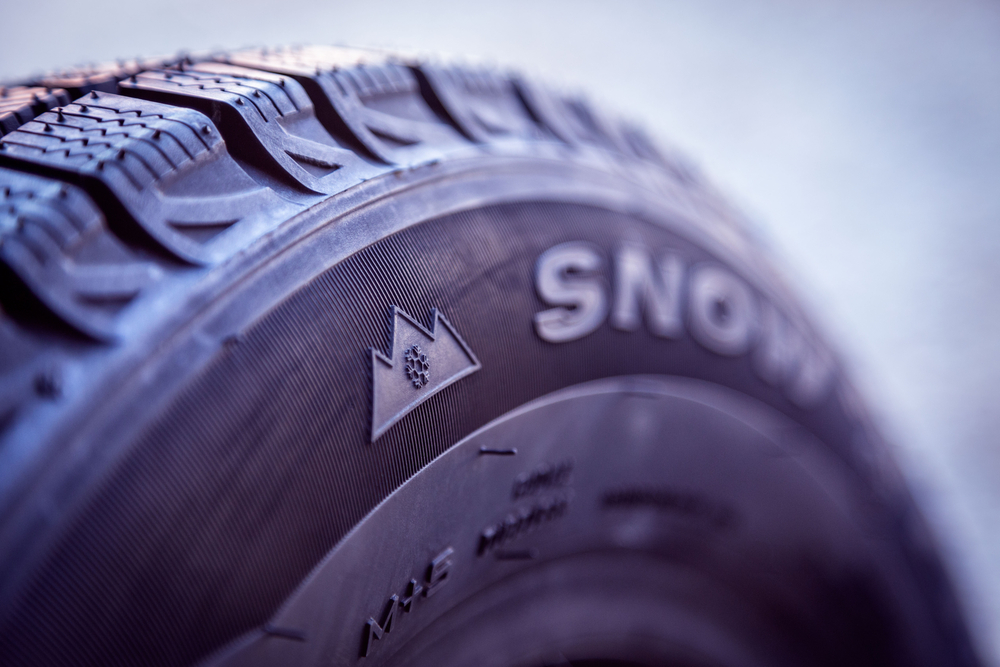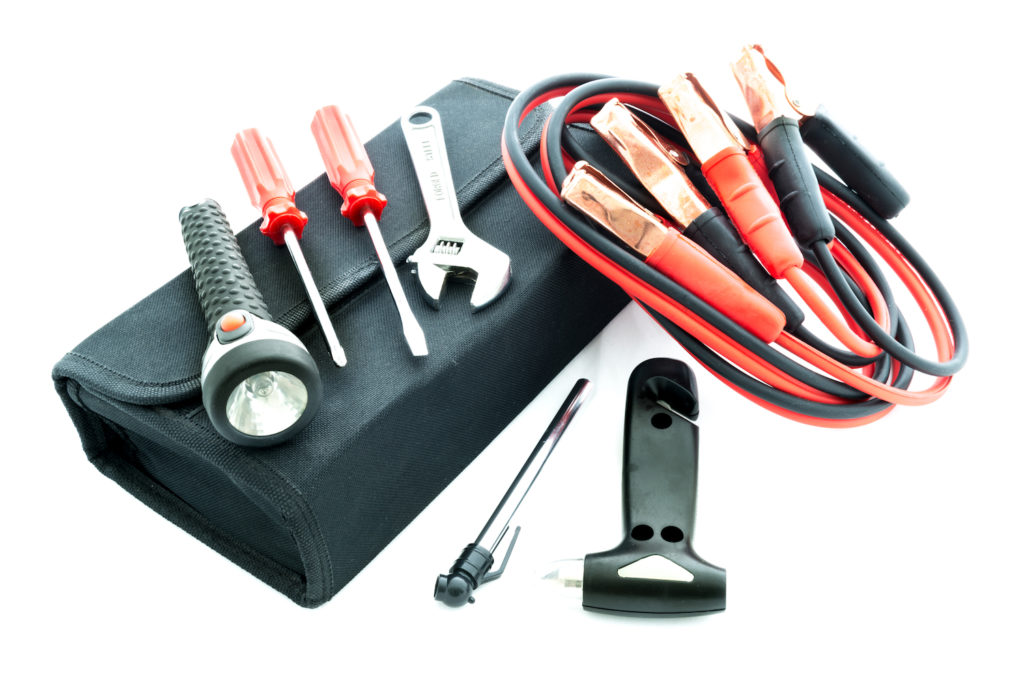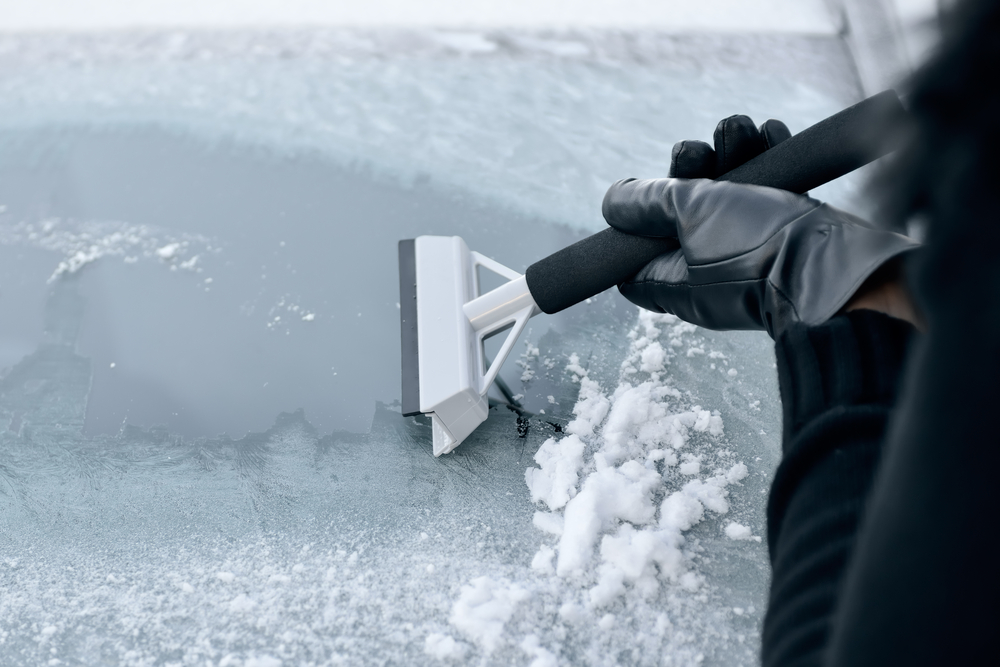Looking for a winter car guide? You’re in luck! Winter in the PNW brings a vast array of weather and conditions for your vehicle to deal with. There’s mud and intense rainstorms with the risk of hydroplaning, snow, sleet, ice, roads getting salted, gravel washouts, and strong winds too! Your vehicle can go through a lot depending on the year, so proper preparation and maintenance is key to having a positive experience this season and a long life for your daily or seasonal car.
An Introduction to Our Winter Car Guide
This will be a comprehensive winter car guide, whether you have a gas or diesel vehicle, we’ll have you covered. Each vehicle is different in what the specific care for it will be, but for the most part there are some standard rules to follow when going into the winter season for safe travels.
The Importance of Winter Car Tires

Think about watching a dog on a hardwood floor. Can they start, stop, or turn abruptly? As comical as the results of that thought can be, applying that to a car is no joke. The effect of poorly suited tires on wet, snowy, or icy roads can be much the same. If your tires are not right for the terrain it can be downright deadly to be on the road. Weather ready tires have a different compound than summer tires. They are able to operate and be soft at lower temperatures, they are siped (cut with small grooves) to give extra grip in inclement weather, have deeper and wider grooves to allow water and debris to escape, and can even have metal spikes to dig into the snow or ice below. If studded snow tires are out of your budget, be sure to at least carry a set of chains in your car to keep you and those around you safe in the snow.
What to Include in a Winter Emergency Car Kit
Accidents in the winter are far too common to not be prepared for. Whether you’re doing urban driving, or setting out to the mountains for some ski time, a properly set up emergency kit is something you’d far rather have and not need, then need and not have. A quick search on Amazon will give you many options for kits, so if you want something premade, this may be the route for you. If you want to set it all up yourself, your options are quite limitless. Here is a list of some essentials we’d recommend, and beyond that it’s up to you to expand!
- Jumper cables: Batteries die. More often in the winter than in other seasons. Don’t be unprepared. If you don’t want to rely on the kindness of others, get something like this portable battery pack to get yourself going, just be sure it’s rated for the size of your motor. Different cars have different starting needs from a battery. Keep this in mind.
- Mylar blanket: these are super thin blankets that can pack away nicely, but will keep you very warm in an emergency.
- Road Flares: these will only be useful once, but they will alert other drivers to a problem and maybe keep them from running into you. The ones linked are actually, LED, so they can be reused if need be!
- Shovel: these may seem silly at times, but they can dig you out of a ditch or snow embankment, or help you to make a shelter or safe space if need be. Better to have and not need.
- First aid kit: fairly obvious choice. If there’s an accident, someone is likely not feeling the best. Having a first aid kit will help mediate issues until you can get real aid.
Though we’ve linked to Amazon, it would be even better to find these products at a local store near you!

Our Top Picks: Winter Car Accessories
In the summer, you have sunshades recommended. Winter has some useful tools too! Here’s a list of some of our favorites.
- Floor Liners: walking in the weather can give you some messy shoes, and depositing that into your carpets can lead to lots of excess wear and damage that can be hard to fix or replace. A good floor liner will give great protection and easy removal for cleaning.
- Ice Scraper / Snow Brush: It’s actually illegal in some areas to drive with snow on your car, so this will help to gently remove that, as well as scrape off glass surfaces to help you see!
- Snow Chains: These are essential if you don’t have studded tires as they will give you a lot of extra grip into the snow, allowing you to get in and out of potentially dangerous situations far easier. Keep in mind that it is vital you pick the right set for the size of your car’s tires. Improperly sized chains won’t do you any good, since they either won’t fit around the wheel, or they will just flop around, potentially coming off or causing damage elsewhere on the car.

Considering a Winter Car Seat Cover? Here Are Our Top Picks:
When you get into your car in winter, you tend to bring a little of it with you, so using a car seat cover can help protect the material for longer! Every seat is different, so getting the right fit can be a challenge. Here are a few good examples of ones that will have good durability and protection for years to come.
- Black Panther Car Seat Cover: This is a great option if you have side airbags, as it doesn’t cover the whole seat, leaving it compatible! This will protect most of the seat besides the bolsters.
- FH Group Black Universal Car Seat Cover: This offers front and rear seat protection. Though the fit may not be perfect for your vehicle, rest assured that the whole seat will be protected from the weather for the winter months,
- ARIES Seat Defender Black Universal Bucket Car Seat Cover Protector: while not the most stylish option, this will provide some of the best protection, as the whole seat is covered securely by durable material. This should give you a long life of winter weather protection!
- Dog Back Seat Cover Protector: this will help protect your interior from your favorite four-legged friends and their paws while you take them on your next adventure!
How to Stop Car Windows From Fogging Up in Winter
Your car windows fog from the temperature difference from inside to outside. It’s actually condensation forming on the glass from the difference, like on a glass of lemonade in the summer. There are few ways to actually fully stop this from happening, but there are some products that provide temporary protection. Applying an anti-fog solution to the glass will give you some protection for a time (results may vary), and this is usually a simple process of wiping on when the car is warm and doesn’t have condensation, then wiping off a moment later after it has time to cure.
Washing Car in Winter: Important Tips
Remember: winter is cold. Don’t wash your car in sub-freezing temperatures without a plan to keep the water from freezing to the surface (and to keep the hose from freezing.) Subfreezing washes are to be avoided whenever possible, but we’ll give you a guide that can help to prevent issues above or a little below freezing (-20 degrees and you’re on your own…)
First things first, touching cold cars or cold water in winter is no fun. If you have access to heating your water prior to the wash, we’d highly recommend it to help it not freeze or at the very least for your own comfort. If not, at least get the vehicle warm. Start it up and drive it around for a while with the heaters on for about 30+ minutes if you can. This will get all the panels and windows as warm as they’re going to get to help out your hands in the steps to come.
As with any wash, an initial rinse is best practice. If you have warm water, this can help to break down any snow or ice left on the vehicle, as well as remove some of the grime that may have built up.
If you have access to an iron removing spray, using it next would be best practice. This will help to break down any of the microscopic metals that may have gotten kicked up onto your vehicle while driving. After a few minutes, go ahead and rinse that off too.
Next, have a designated set of rags or a mitt for cleaning your wheels. These will be one of the dirtiest parts of your vehicle (along with the side skirts and bottoms of the bumpers) due to the proximity to the ground. Give this some time, and get them as clean as you can, this will give them a longer life since debris won’t be sitting on them for too long, alleviating some excess deterioration. Once done with all of them, make sure to set the tools you used to clean them aside to be cleaned and do not use them on the rest of the car to avoid contaminating your paint.
Then, starting from the top of your car, start washing. Try and take it a panel at a time if you can to help it and rinse. Try and rinse your mitt often, or to set your clothes to the side once they’ve been used to keep from rubbing any contaminants back into the paint. Take your time (if the temperature allows) until everything is nice and clean.
Give the car a final rinse to wash off any residue and warm the car once again. Almost done!
If you have access to a decent wax and there’s currently no rain or snowfall, now’s the time to use it. A good wax can give a strong protective barrier to your paint, and protect it from further exposure for the next few weeks. Application of this is largely the same, just make sure that the product isn’t too cold before application (store it in your house for a bit prior to usage.) Wipe off when done, and you’re good to go!
Key Considerations for Winter Car Storage
If you have a seasonal vehicle, be sure to wash it properly. Depending on how early in the season you decide to store it, there can be built-up oils, mud, salt, or grime on the undercarriage, so be sure to give extra attention to the engine bay, wheel wells, and undercarriage to prevent deterioration while it’s put away.
Oftentimes putting a dehumidifier into the vehicle like this one to catch any moisture that may be in the air, and prevent possible molding is a good idea. Older materials are more susceptible to damaging mold or cracking from excess moisture, so this is an inexpensive and safe way to prevent damage.
Be sure to store it in a safe location, preferably one that will be out of the weather (like a garage or storage unit) with a cover on it to prevent falling dust from dirtying your freshly cleaned car. Temperature fluctuations from the air alone or ice accumulation due to the weather or ambient moisture levels can wreak havoc on your vehicle’s condition. Proper storage will keep the car in the same condition as when you put it away, giving you a pleasant feeling when you uncover it for your next outing and find it spotless and ready to go.
For longer-term storage, ensure your battery is either on a battery tending unit (usually a small charging pack plugged into an outlet in your home) or at least disconnected from the vehicle. Even if you’re not turning your car on, if the battery is connected, certain aspects of the vehicle keep running. The alarm system for instance will constantly use a very small amount of battery while it sits ready to receive signal to unlock, or while it tends to the active sensors that would tell it to go off. Dashcams, auto start systems, clocks, radios, defective fuses, or a small (or large) short in the wires will also consume battery slowly, which can leave the car unable to start when you go to use it next.
Depending on the duration of storage, be sure to start the vehicle and let it run for 10 to 20 minutes every few weeks to keep all of the seals and gaskets lubricated to prevent cracking. If the car is a gas-powered vehicle and is to be stored for at least 3 months out of the year, be sure to store it with fuel not containing ethanol. Ethanol is a fluid commonly used in gas with a vapor pressure that evaporates in the open air at a rate faster than gasoline, so fuels based around its inclusion will be rendered ineffective after it is gone. The ethanol content will evaporate over time and cause a contaminated burn that could clog your fuel filter or injectors.
Looking for Trustworthy Mechanics in Portland, OR?
If you’re prepping for winter, it’s a good idea to take your car to an expert to make sure it’s running right. Sometimes choosing the right place to go can be daunting, since not all mechanics are created equally. If you’re looking for a Portland Oregon mechanic – you’re in the right place! Schedule a service here or call us at (503) 253-1747.
